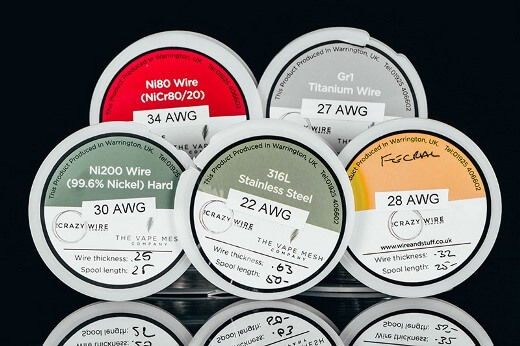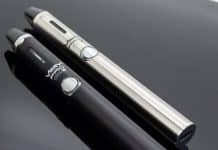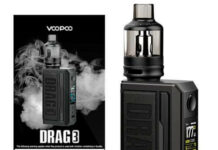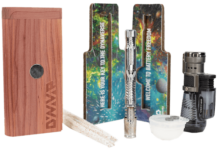
There are several types of vape wire that you can choose from these days, so it can be hard for a novice to know which is the right vaping wire for them.
Not every coil type is suitable for every style of vaping, so you need to make sure that you’re picking the right one before you fire up your device, since some vape coil wire is best for use with temperature control and others for vaping with wattage.
While it all sounds very complicated, in fact, it isn’t as hard to find the best wire for vaping as it might first appear. All wire has certain basic characteristics, regardless of what it’s made of.
For example, all wire coil types are defined in terms of their gauge, and as the number increases, the diameter of the wire becomes smaller, and its resistance increases.
If you have a TC mod, you will need to chose the right coil wire to regulate the wattage and current effectively, and this means you’ll need a wire that is suited to TC vaping with the right TCR (Temperature Coefficient of Resistance).
Wire gauge, Resistance, Ramp Time and TCR
Whilst many wires used in vaping devices can vary based on several key factors, there are some characteristics that are universally applied to all wires used within a vape, despite their different compositions.
These universal characteristics are the diameter/gauge of the wire, the resistance of the wire, and the ramp up time of varying materials.
Wire Gauge
The first of these universal characteristics of any vape wire is the diameter or “gauge” of the wire.
This gauge is usually expressed via a numerical value. A point of note when discussing a wire’s gauge is that as the wire gauge’s numerical value increases, the actual diameter of the wire gets smaller.
Some common gauges of wires range from 22, 24 and 26 gauge to 30 and 32.
Resistance
The resistance of the wire is based on the diameter of the wire. Simply put, as the wire’s diameter increases, the wire resistance decreases.
This, in turn, means that it will likely take longer for the wire to increase in temperature because of the greater diameter and mass of the wire.
Thinner wires with a lower gauge number will be higher in resistance than a thicker wire.
Ramp up Time
The ramp up time of the vape coil refers to the time it takes for the coil to reach the required temperature needed for the e-liquid inside the vape to begin to vaporise.
Generally speaking, as the wire size increases, the ramp up time also often increases as there is simply more wire to heat up.
The ramp up time is also dependent on the material of the coil itself, such as stainless steel which heats up significantly faster than other materials.
TCR
TCR refers to a value named the “Temperature Coefficient of Resistance”. Wires used within a vaping pen are chosen solely based on their TCR value.
Temperature control mods use the TCR value to determine when and how to regulate the wattage and current that is delivered to the coil itself.
The TCR value of the wire is determined by the increase in resistance on the wire as the temperature gradually increases.
Temperature control mods use the knowledge of the material being used, the resistance of the coil and the cold resistance of the coil to determine if the coil is too cold or too hot.
Which Coils are for TC Vaping and Wattage Vaping?

Of the various coil types out there, there are three which are best suited to TC vaping. These are:
- Stainless steel
- Nickel coils
- Titanium
While nickel and titanium wire for vaping is only suitable for TC mods, a stainless steel coil build can work equally well for TC and for wattage vaping.
When it comes to wattage vaping you can use:
- Stainless steel
- Kanthal
- Nichrome
Both of these are only suited to wattage vaping.
Coils for TC Vaping
Stainless Steel
Stainless steel is a common material used in vaping wires. It can be used in both temperature control vaping and regular straight wattage vaping.
This wiring material usually consists of nickel, chromium and carbon, with the nickel consisting of roughly around 10%.
There are several different types of stainless steel used in vaping wiring that each have their own benefits and drawbacks.
Wiring comprised of stainless steel is often very easy to form and bend, holding its shape reliably.
Stainless steel has quite a fast ramp up time due to its relatively low resistance to heat.
It should be noted, however, that dry burning stainless steel at higher wattages could cause an unintentional release of harmful chemical compounds.
To summarise, the advantages of a stainless steel wire are its fast ramp up time, its easy moldability and its sturdiness.
On the other hand, stainless steel wiring should not be dry burnt at higher wattages and has a nickel content within.
Although this nickel content within the wiring material is relatively low when compared to other wire materials.
Nickel
Vape wiring comprised of nickel is most often found to be pure nickel.
This wiring is usually referred to as ni200 in many vaping products. Nickel wiring is no stranger to temperature controlled vaping, being the first material used in the process originally.
Unfortunately, nickel wiring cannot be used in straight wattage vaping.
Nickel wiring has two primary setbacks. The first of which revolves around nickel’s inability to be used in conjunction with uniform coils.
Due to the material’s soft nature, nickel can often become mishappen and deformed when the heat is applied during wicking.
The second main issue of nickel wiring is its tendency to be uncomfortable to use for many vape users due to its pure nickel consistency.
Additionally, those with a nickel allergy or those who suffer from sensitivity to the material will found it very uncomfortable to use in their vaping device.
In summary, nickel wiring may have more setbacks than advantages when used in vaping kits.
Whilst nickel wiring remains a prominent and well-respected option for temperature-controlled vaping, it has little else to offer due to its inherent high nickel content and its inability to retain its shape for any prolonged periods.
Titanium
Similarly to nickel wiring, titanium wiring can only be used for temperature-controlled vaping, which may seem like an immediate downside to this option.
Additionally, there seems to be a certain degree of controversy revolving around the safety of using titanium wire for vaping.
There seems to be some evidence that suggests that heating the titanium wire can release a component named titanium dioxide.
This compound is said to have toxic qualities, which, obviously, means that you wouldn’t want to inhale the compound directly into the body whilst vaping.
Furthermore, titanium wire is said to often have some safety issues regarding its inability to be easily and quickly switched off, therefore causing some concerns that the device itself may set alight or catch fire due to the high heat of the wire not being able to cool fast enough.
Despite this, however, titanium wiring is very easy to create coils out of, and it is very easy to wick and, if your temperature control mod is functioning as it should there should be no issue of the titanium wiring getting too hot. Titanium also holds its shape very well.
Coils for Wattage Vaping
Kanthal
Kanthal wiring is a material consisting of iron, chromium and aluminium alloy.
Kanthal wiring is widely known for its excellent resistance to oxidation, which makes it a top-tier option for those looking for a high-quality vaping experience.
However, kanthal wiring cannot be used with temperature control mods, therefore making it unable to be used for temperature-controlled vaping and only being functional for straight wattage vaping.
Kanthal wiring is often used as a starter material for those who are just getting in to making their own coils and rebuildable vape kits.
This is because kanthal wiring is very easy to work around and work with as it is easily bendable whilst also being sturdy enough to hold its shape when it is eventually formed into coils.
Another great advantage of kanthal wiring is its affordability and its availability, being widely available in most online vape shops as well as most brick and mortar vape shops for not that much money.
To surmise, kanthal wiring is relatively inexpensive, is widely available, is the perfect starter wire for those just starting to create their own vape kits and is very sturdy.
The only real downside to the material is its inability to be used with temperature control mods.
Nichrome
Another wire material that is perfectly suited to straight wattage vaping is that of nichrome.
Nichrome wire consists of chromium and nickel alloy and may sometimes contain other metal-based materials such as iron.
Nichrome is available in several varieties, commonly referred to as “grades”.
These grades refer to the nichrome’s consistencies of specific materials such as how much chromium is in the compound compared to nickel.
Nichrome has very similar properties to kanthal, therefore leading to a similar vaping experience overall.
However, there are several ways in which the two wire materials differ from one another.
One such difference is nichrome’s lower resistance, therefore meaning that it heats up much faster, leading to a quicker vape.
Much like kanthal, nichrome can be easily shaped when coiling and also holds its shape very effectively.
On the other hand, nichrome has a much lower melting point when compared to kanthal, meaning that it could possibly burn and become exposed and broken if it becomes too hot regularly.
This can be easily solved by starting the vape on a low temperature and allowing the coils to heat up gradually rather than hit the maximum wattage immediately whilst the coils are still dry.
The Importance of Wire
Changing and experimenting with your wire gauge and type can give you greater control over your wattage, current and ramp time, and above all, the pleasure you get from your vape.
You can feel free to vary coil diameters, wire materials and the number of wraps you use to find the best wire for flavour and to suit your preferences.
What works well with one atomizer may not work so well with another, so being flexible really is the key.
Although some coil types are hard to find in stores, they can readily be purchased online and will give you plenty of choices when it comes to customising your vaping experience.










